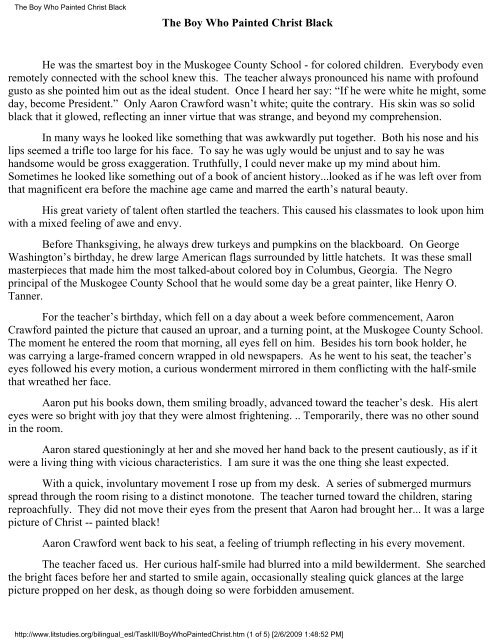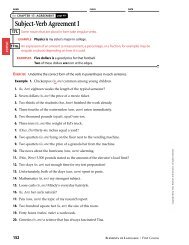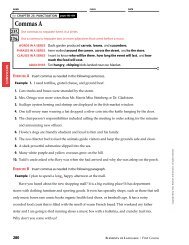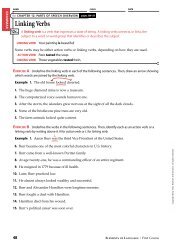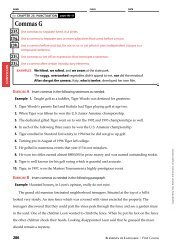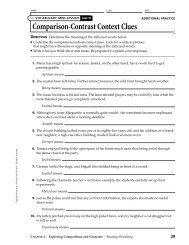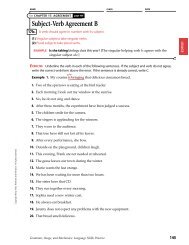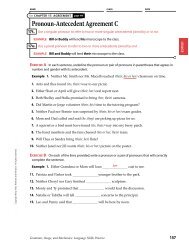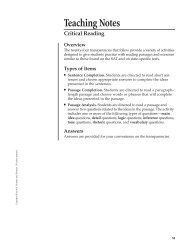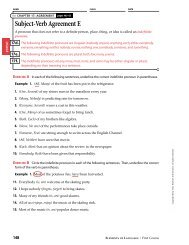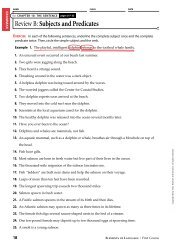The Boy Who Painted Christ Black - Azinga Cartoons
The Boy Who Painted Christ Black - Azinga Cartoons
The Boy Who Painted Christ Black - Azinga Cartoons
Create successful ePaper yourself
Turn your PDF publications into a flip-book with our unique Google optimized e-Paper software.
<strong>The</strong> <strong>Boy</strong> <strong>Who</strong> <strong>Painted</strong> <strong>Christ</strong> <strong>Black</strong><br />
<strong>The</strong> <strong>Boy</strong> <strong>Who</strong> <strong>Painted</strong> <strong>Christ</strong> <strong>Black</strong><br />
He was the smartest boy in the Muskogee County School - for colored children. Everybody even<br />
remotely connected with the school knew this. <strong>The</strong> teacher always pronounced his name with profound<br />
gusto as she pointed him out as the ideal student. Once I heard her say: “If he were white he might, some<br />
day, become President.” Only Aaron Crawford wasn’t white; quite the contrary. His skin was so solid<br />
black that it glowed, reflecting an inner virtue that was strange, and beyond my comprehension.<br />
In many ways he looked like something that was awkwardly put together. Both his nose and his<br />
lips seemed a trifle too large for his face. To say he was ugly would be unjust and to say he was<br />
handsome would be gross exaggeration. Truthfully, I could never make up my mind about him.<br />
Sometimes he looked like something out of a book of ancient history...looked as if he was left over from<br />
that magnificent era before the machine age came and marred the earth’s natural beauty.<br />
His great variety of talent often startled the teachers. This caused his classmates to look upon him<br />
with a mixed feeling of awe and envy.<br />
Before Thanksgiving, he always drew turkeys and pumpkins on the blackboard. On George<br />
Washington’s birthday, he drew large American flags surrounded by little hatchets. It was these small<br />
masterpieces that made him the most talked-about colored boy in Columbus, Georgia. <strong>The</strong> Negro<br />
principal of the Muskogee County School that he would some day be a great painter, like Henry O.<br />
Tanner.<br />
For the teacher’s birthday, which fell on a day about a week before commencement, Aaron<br />
Crawford painted the picture that caused an uproar, and a turning point, at the Muskogee County School.<br />
<strong>The</strong> moment he entered the room that morning, all eyes fell on him. Besides his torn book holder, he<br />
was carrying a large-framed concern wrapped in old newspapers. As he went to his seat, the teacher’s<br />
eyes followed his every motion, a curious wonderment mirrored in them conflicting with the half-smile<br />
that wreathed her face.<br />
Aaron put his books down, them smiling broadly, advanced toward the teacher’s desk. His alert<br />
eyes were so bright with joy that they were almost frightening. .. Temporarily, there was no other sound<br />
in the room.<br />
Aaron stared questioningly at her and she moved her hand back to the present cautiously, as if it<br />
were a living thing with vicious characteristics. I am sure it was the one thing she least expected.<br />
With a quick, involuntary movement I rose up from my desk. A series of submerged murmurs<br />
spread through the room rising to a distinct monotone. <strong>The</strong> teacher turned toward the children, staring<br />
reproachfully. <strong>The</strong>y did not move their eyes from the present that Aaron had brought her... It was a large<br />
picture of <strong>Christ</strong> -- painted black!<br />
Aaron Crawford went back to his seat, a feeling of triumph reflecting in his every movement.<br />
<strong>The</strong> teacher faced us. Her curious half-smile had blurred into a mild bewilderment. She searched<br />
the bright faces before her and started to smile again, occasionally stealing quick glances at the large<br />
picture propped on her desk, as though doing so were forbidden amusement.<br />
http://www.litstudies.org/bilingual_esl/TaskIII/<strong>Boy</strong><strong>Who</strong><strong>Painted</strong><strong>Christ</strong>.htm (1 of 5) [2/6/2009 1:48:52 PM]
<strong>The</strong> <strong>Boy</strong> <strong>Who</strong> <strong>Painted</strong> <strong>Christ</strong> <strong>Black</strong><br />
“Aaron,” she spoke at last, a slight tinge of uncertainty in her tone, “this is a most welcome<br />
present. Thanks. I will treasure it.” She paused, then went on speaking, a trifle more coherent than<br />
before. “Looks like you are going to be quite an artist...Suppose you come forward and tell the class how<br />
you came to paint this remarkable picture.”<br />
When he rose to speak, to explain about the picture, a hush fell tightly over the room, and the<br />
children gave him all of their attention...something they rarely did for the teacher. He did not speak at<br />
first; he just stood there in front of the room, toying absently with his hands, observing his audience<br />
carefully, like a great concert artist.<br />
“It was like this,” he said, placing full emphasis on every word. “You see, my uncle who lives in<br />
New York teaches classes in Negro History at the Y.M.C.A. When he visited us last year he was telling<br />
me about the many great black folks who have made history. He said black folks were once the most<br />
powerful people on earth. When I asked him about <strong>Christ</strong>, he said no one ever proved whether he was<br />
black or white. Somehow a feeling came over me that he was a black man, ‘cause he was so kind and<br />
forgiving, kinder than I have ever seen white people be. So, when I painted his picture I couldn’t help<br />
but paint it as I thought it was.”<br />
After this, the little artist sat down, smiling broadly, as if he had gained entrance to a great<br />
storehouse of knowledge that ordinary people could neither acquire nor comprehend.<br />
<strong>The</strong> teacher, knowing nothing else to do under prevailing circumstances, invited the children to<br />
rise from their seats and come forward so they could get a complete view of Aaron’s unique piece of art.<br />
When I came close to the picture, I noticed it was painted with the kind of paint you get in the<br />
five and ten cents stores. Its shape was blurred slightly, as if someone had jarred the frame before the<br />
paint had time to dry. <strong>The</strong> eyes of <strong>Christ</strong> were deepset and sad, very much like those of Aaron’s father,<br />
who was a deacon in the local Baptist Church. This picture of <strong>Christ</strong> looked much different from the one<br />
I saw hanging on the wall when I was in Sunday School. It looked more like a helpless Negro, pleading<br />
silently for mercy.<br />
For the next few days, there was much talk about Aaron’s picture.<br />
<strong>The</strong> school term ended the following week and Aaron’s picture, along with the best handwork<br />
done by the students that year, was on display in the assembly room. Naturally, Aaron’s picture graced<br />
the place of honor.<br />
<strong>The</strong>re was no book work to be done on commencement day, and joy was rampant among the<br />
children. <strong>The</strong> girls in their brightly colored dresses gave the school the delightful air of Spring<br />
awakening.<br />
In the middle of the day all the children were gathered in the small assembly. On this day we<br />
were always favored with a visit from a man whom all the teachers spoke of with mixed esteem and<br />
fear. Professor Danual, they called him, and they always pronounced his name with reverence. He was<br />
supervisor of all the city schools, including those small and poorly equipped ones set aside for colored<br />
children.<br />
<strong>The</strong> great man arrived almost at the end of our commencement exercises. On seeing him enter<br />
http://www.litstudies.org/bilingual_esl/TaskIII/<strong>Boy</strong><strong>Who</strong><strong>Painted</strong><strong>Christ</strong>.htm (2 of 5) [2/6/2009 1:48:52 PM]
<strong>The</strong> <strong>Boy</strong> <strong>Who</strong> <strong>Painted</strong> <strong>Christ</strong> <strong>Black</strong><br />
the hall, the children rose, bowed courteously, and sat down again, their eyes examining him as if he<br />
were a circus freak.<br />
He was a tall white man with solid gray hair that made his lean face seem paler than it actually<br />
was. His eyes were the clearest blue I have ever seen. <strong>The</strong>y were the only lifelike things about him.<br />
As he made his way to the front of the room the Negro principal, George Du Vaul, was walking<br />
ahead of him, cautiously preventing anything from getting in his way. As he passed me, I heard the<br />
teachers, frightened, sucking in their breath, felt the tension tightening.<br />
A large chair was in the center of the rostrum. It had been daintily polished and the janitor had<br />
laboriously recushioned its bottom. <strong>The</strong> supervisor went straight to it without being guided, knowing<br />
that this pretty splendor was reserved for him.<br />
Presently the Negro principal introduced the distinguished guest and he favored us with a short<br />
speech. It wasn’t a very important speech. Almost at the end of it, I remembered him saying something<br />
about he wouldn’t be surprised if one of us boys grew up to be a great colored man, like Booker T.<br />
Washington.<br />
After he sat down, the school chorus sang two spirituals and the girls in the fourth grade did an<br />
Indian folk dance. This brought the commencement program to an end.<br />
After this the supervisor came down from the rostrum, his eyes tinged with curiosity, and began<br />
to view the array of handwork on display in front of the chapel.<br />
Suddenly his face underwent a strange rejuvenation. His clear blue eyes flickered in<br />
astonishment. He was looking at Aaron Crawford’s picture of <strong>Christ</strong>. Mechanically he moved his<br />
stooped form closer to the picture and stood gazing fixedly at it, curious and undecided, as though it were<br />
a dangerous animal that would rise any moment and spread destruction.<br />
We waited tensely for his next movement. <strong>The</strong> silence was almost suffocating. At last he twisted<br />
himself around and began to search the grim faces before him. <strong>The</strong> fiery glitter of his eyes abated<br />
slightly as they rested on the Negro principal, protestingly.<br />
“<strong>Who</strong> painted this sacrilegious nonsense?” he demanded sharply.<br />
“I painted it, sir.” <strong>The</strong>se were Aaron’s words, spoken hesitantly. He wetted his lips timidly and<br />
looked up at the supervisor, his eyes voicing a sad plea for understanding.<br />
He spoke again, this time more coherently. “Th’ principal said a colored person have jes as much<br />
right paintin’ Jesus black as a white person have paintin’ him white. And he says... ” At this point he<br />
halted abruptly, as if to search for his next words. A strong tinge of bewilderment dimmed the glow of<br />
his solid black face. He stammered out a few more words, then stopped again.<br />
<strong>The</strong> supervisor strode a few steps toward him. At last color had swelled some of the lifelessness<br />
out of his lean face.<br />
“Well, go on!” he said, enragedly, ”...I’m still listening.”<br />
Aaron moved his lips pathetically but no words passed them. His eyes wandered around the<br />
room, resting finally, with an air of hope, on the face of the Negro principal. After a moment, he jerked<br />
http://www.litstudies.org/bilingual_esl/TaskIII/<strong>Boy</strong><strong>Who</strong><strong>Painted</strong><strong>Christ</strong>.htm (3 of 5) [2/6/2009 1:48:52 PM]
<strong>The</strong> <strong>Boy</strong> <strong>Who</strong> <strong>Painted</strong> <strong>Christ</strong> <strong>Black</strong><br />
his face in another direction, regretfully, as if something he had said had betrayed an understanding<br />
between him and the principal.<br />
Presently the principal stepped forward to defend the school’s prize student.<br />
“I encouraged the boy in painting that picture,” he said firmly. “And it was with my permission<br />
that he brought the picture into this school. I don’t think the boy is so far wrong in painting <strong>Christ</strong> black.<br />
<strong>The</strong> artists of all other races have painted whatever God they worship to resemble themselves. I see no<br />
reason why we should be immune from that privilege. After all, <strong>Christ</strong> was born in that part of the world<br />
that had always been predominantly populated by colored people. <strong>The</strong>re is a strong possibility that he<br />
could have been a Negro.”<br />
But for the monotonous lull of heavy breathing, I would have sworn that his words had frozen<br />
everyone in the hall. I had never heard the little principal speak so boldly to anyone, black or white.<br />
<strong>The</strong> supervisor swallowed dumbfoundedly. His face was aglow in silent rage.<br />
“Have you been teaching these children things like that?” he asked the Negro principal, sternly.<br />
“I have been teaching them that their race has produced great kings and queens as well as slaves<br />
and serfs,” the principal said. “<strong>The</strong> time is long overdue when we should let the world know that we<br />
erected and enjoyed the benefits of a splendid civilization long before the people of Europe had a written<br />
language.”<br />
<strong>The</strong> supervisor shook with anger as he spoke. “You are not being paid to teach such things in this<br />
school, and I am demanding your resignation for overstepping your limit as principal.”<br />
George Du Vaul did not speak. A strong quiver swept over his sullen face. He revolved himself<br />
slowly and walked out of the room towards his office...<br />
Some of the teachers followed the principal out of the chapel, leaving the crestfallen children<br />
restless and in a quandary about what to do next. Finally we started back to our rooms...<br />
A few days later I heard that the principal had accepted a summer job as art instructor of a small<br />
high school somewhere in south Georgia and had gotten permission from Aaron’s parents to take him<br />
along so he could continue to encourage him in his painting.<br />
I was on my way home when I saw him leaving his office. He was carrying a large briefcase and<br />
some books tucked under his arm. He had already said good-by to all the teachers, and strangely, he did<br />
not look brokenhearted. As he headed for the large front door, he readjusted his horn-rimmed glasses,<br />
but did not look back. An air of triumph gave more dignity to his soldierly stride. He had the appearance<br />
of a man who had done a great thing, something greater than any ordinary man would do.<br />
Aaron Crawford was waiting outside for him. <strong>The</strong>y walked down the street together. He put his<br />
arms around Aaron’s shoulder affectionately. He was talking sincerely to Aaron about something, and<br />
Aaron was listening, deeply earnest.<br />
I watched them until they were so far down the street that their forms had begun to blur. Even<br />
from this distance I could see they were still walking in brisk, dignified strides, like two people who had<br />
won some sort of victory.<br />
http://www.litstudies.org/bilingual_esl/TaskIII/<strong>Boy</strong><strong>Who</strong><strong>Painted</strong><strong>Christ</strong>.htm (4 of 5) [2/6/2009 1:48:52 PM]
<strong>The</strong> <strong>Boy</strong> <strong>Who</strong> <strong>Painted</strong> <strong>Christ</strong> <strong>Black</strong><br />
- John Henrik Clarke<br />
http://www.litstudies.org/bilingual_esl/TaskIII/<strong>Boy</strong><strong>Who</strong><strong>Painted</strong><strong>Christ</strong>.htm (5 of 5) [2/6/2009 1:48:52 PM]<br />
(abridged)


